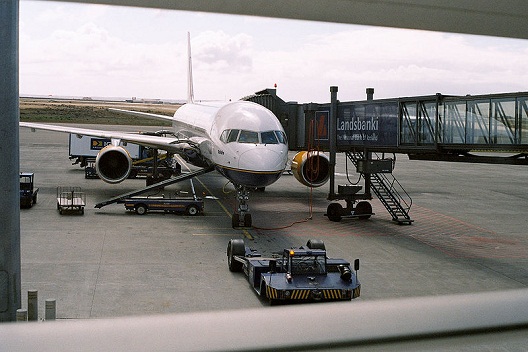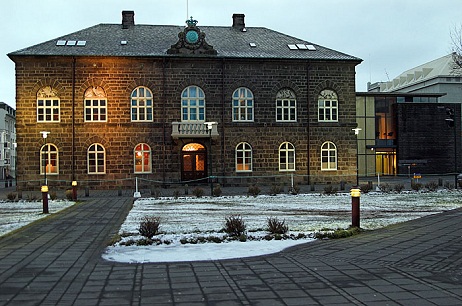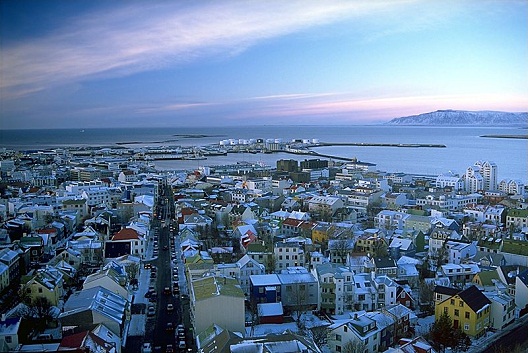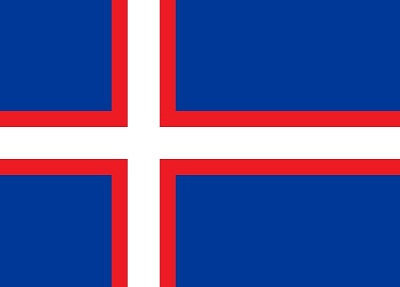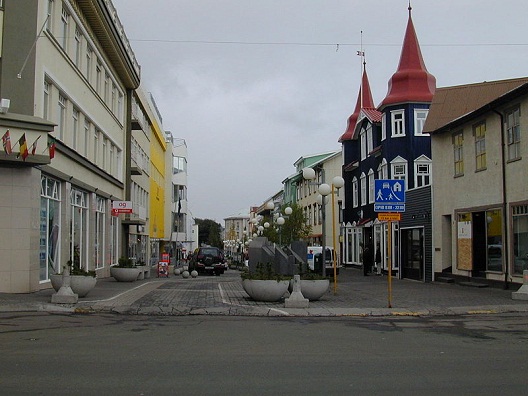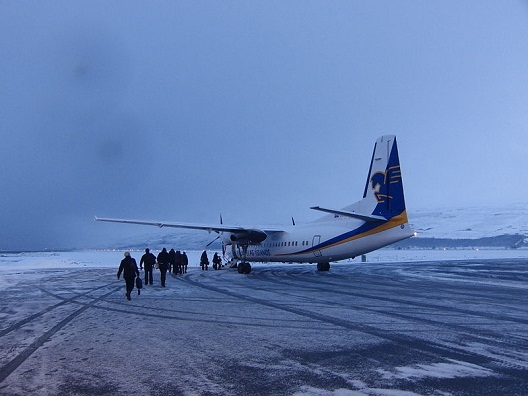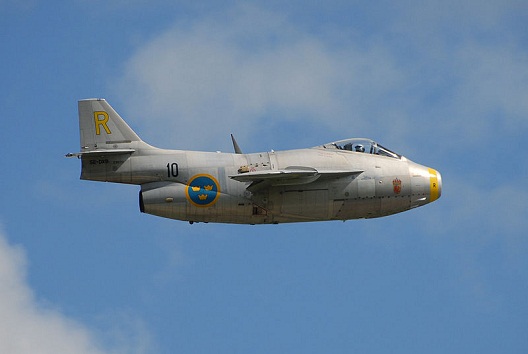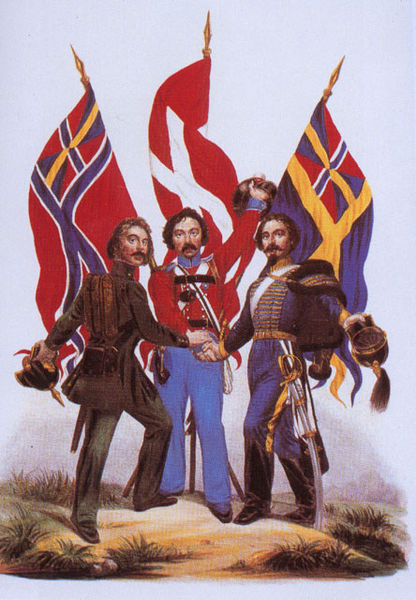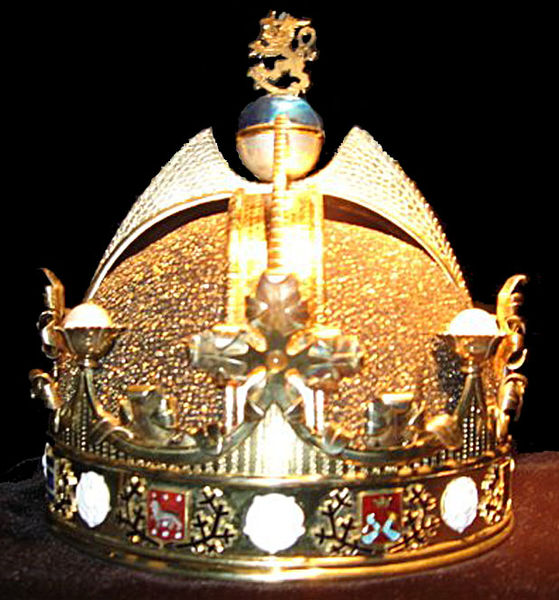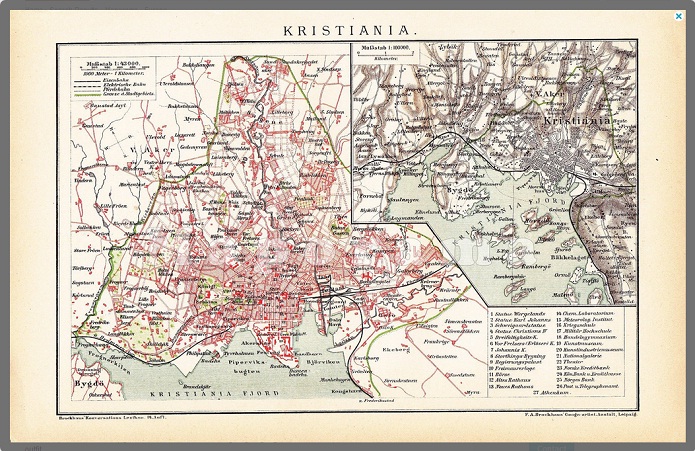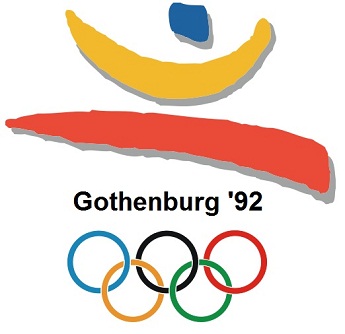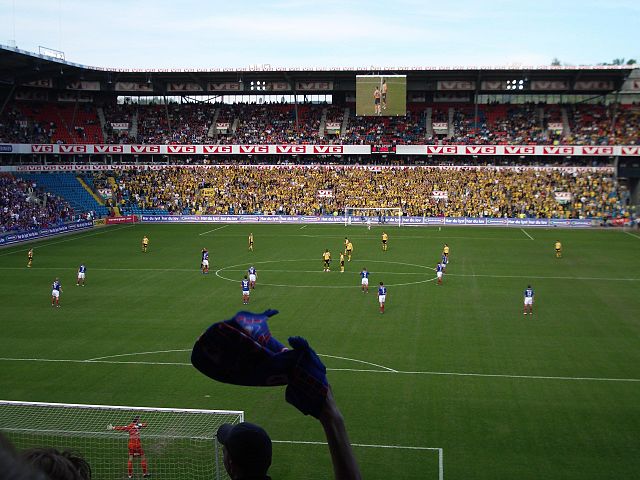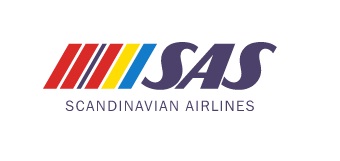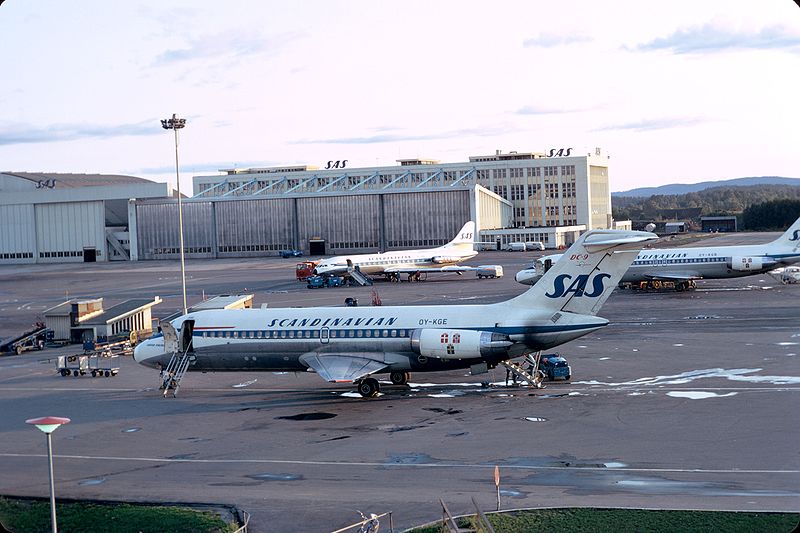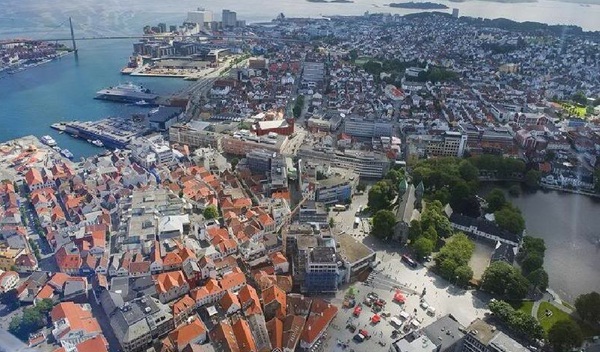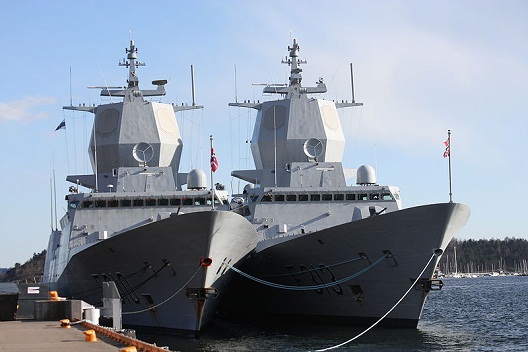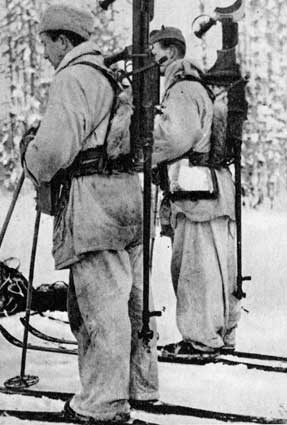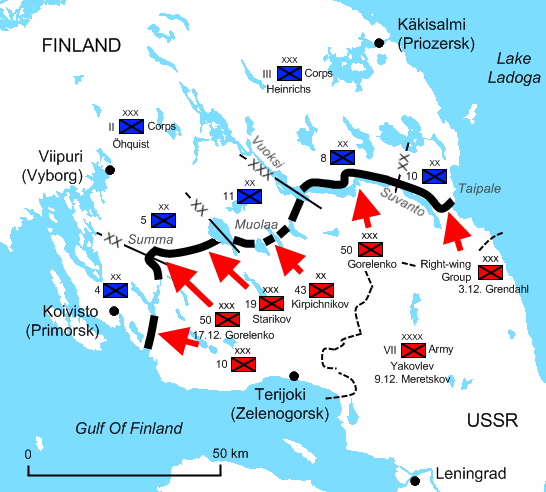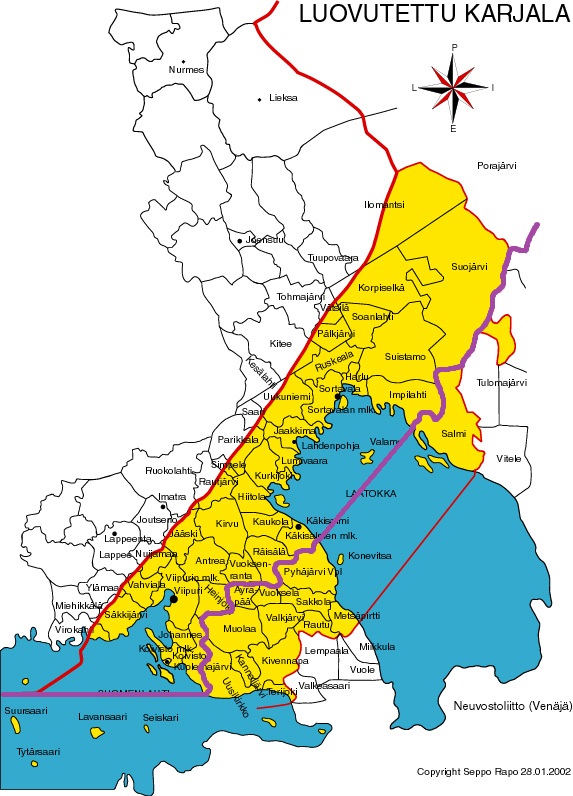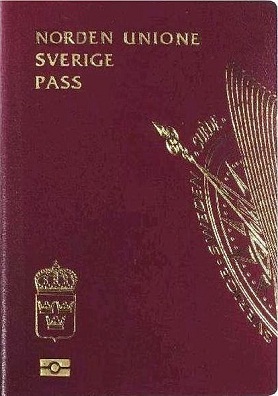Arriving into Stavanger by train from Kristiania (NSB)
The town of Stavanger, with the port clearly visible
Stavanger is one of the most western cities in Norway, and in continental Scandinavia, and is only just pipped to the title by Bergen. Stavanger is an important shipping city in the FNS, an important location for the pan-Nordic shipping company AMS (Aker-Maersk Shipping) as well as the location of a significant naval base. The Nordic Allied Navy is one of the more equal partnerships in the Federation of Nordic States, as each of the 4 major powers have a large military with each state contributing many corvettes, frigates and other ships to the overall navy. This means that a high level of deliberate integration is needed in the naval field, with many shared command and control centres.
Although nominally separate from each other, each of the state's navies (Danish, Swedish, Norwegian & Finnish) generally act together as a integrated unit, although each state generally protects it's own waters, with the Faroe Islands, Iceland & Greenland being a shared venture led by the Danish Navy and Estonia working closely with the Finnish and Swedish Navies. The Norwegian Navy looks after a large swathe of the Norwegian Sea and the Barents Sea, and even as far north as the Norwegian Svalbard Islands.
"KNM Fridtjof Nansen" and "KNM Helge Ingstad", in Oslo before heading out to the Norwegian Sea and Stavanger
While a united and co-funded attempt to build or purchase larger ships have been debated, the lack of much need for a large navy have hindered political efforts to gather support. Greenland and Iceland act as the most remote territories, and both are adequately defended using conventional airfields and naval ports. Greenland also is host to Thule Air Force Base from the US Air Force, due to Greenland's position adjacent to the North American continent.
More recent efforts have focussed on multi-national actions, such as anti-pirate patrols in the sea by Somalia, as well as claiming, holding and patrolling territory - particularly in the Arctic Ocean which is becoming a large point in international discussions, as well as integrating the nominally separate navies as far as possible - far surpassing the NATO integration that has occurred elsewhere. This had largely been born out of circumstances and events between 1939 and 1945 - when Europe was ravaged by the Second World War.
The biggest event to happen during this time period, was the Winter War with the Soviet Union attempting to invade Finland for claimed security reasons (disputed by later historians). Relations between the Soviet Union and Finland had generally been reasonable, although major sticking points had been found following the First World War and subsequent Finnish Civil War when the communists were mostly crushed as a power in Finnish politics. However, as nationalists managed to claim victory in their attempts to put a Monarchy in place in Finland, they had to make numerous concessions to the more central and left-centre political parties, namely the SDP and Agrarian League, both of whom would prove able to work in Parliament despite both parties strong Republican tendencies towards the Monarchy. Both party's leaders would be instrumental in later years of establishing ever closer ties with Sweden - particularly the SDP who had a very cosy relationship with the Swedish Social Democrat Party. Swedish volunteers actions in conjunction with White Finns in executing Red Finns would prove a sticking point, but as Finland reconciled with itself these problems were addressable.
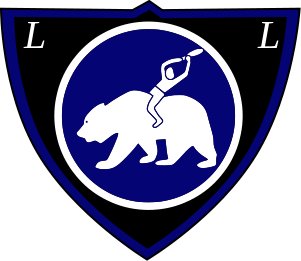
Emblem of the Laihia Movement
The Monarchy's position in Finland was later entrenched when King Kaarle (Kaarle II in official terms) played a large role in subduing the Seinajoki Rebellion. Nationalist factions led by the Laihia Movement, feeling outmanoeuvred by the more left leaning SDP and Agrarian Party and also feeling that Finland was selling out to Sweden, escalated into violence and later a rebellion. Finland-Sweden relations had grown solidly, as previously mentioned, but this had come partly at the cost (at least in some public eyes) Finnish culture, with the losing of Repola and Porajarvi during Finnish-Soviet negotiations, and a "Swedish" King on the throne. A rousing radio speech by the young Kaarle in fluent Finnish, advocating peace and calling for a "Rally for National Unity" in Helsinki undermined much of the nationalist support which was further eroded when the news of their covert violence spread. Kaarle was in Finland to stay, and would later marry a Finnish lady, cementing himself as the King of the Finns, but in doing so would place Finland as an anti-communist nation in Soviet eyes (cemented by communist civilians fleeing the rebellion violence into Russia).
Finland's relationship with the Soviet Union however was more rocky. It would grow from a rebellious province, gaining independence upon largely the borders of the former Grand Duchy, then to a mutual non-aggression pact. However, in the 1930s Stalin rose to power in the Soviet Union, and by 1938 was feeling uneasy about the location of the Soviet-Finnish border being so close to Leningrad which has never been an issue formerly due to Finland being a Russian Grand Duchy. A secret treaty between the Soviet Union and Nazi Germany had placed the Lithuania, Latvia, Estonia & Finland all within the Soviet sphere of influence (all former Russian Empire territories). Lithuania, Lativa and Estonia were later forced to allow Soviet bases on their territories, accelerating their demise into Soviet states. Finnish-Soviet relations took a hit during negotiations in 1938 - the Soviets demanded territory concessions on the Karelian Isthmus, moving the border significantly further away from Leningrad (formerly known as St Petersburg). The Finns refused, as a lot of their industrial capacity was based in the area, and was also an area close to the Finnish heart.
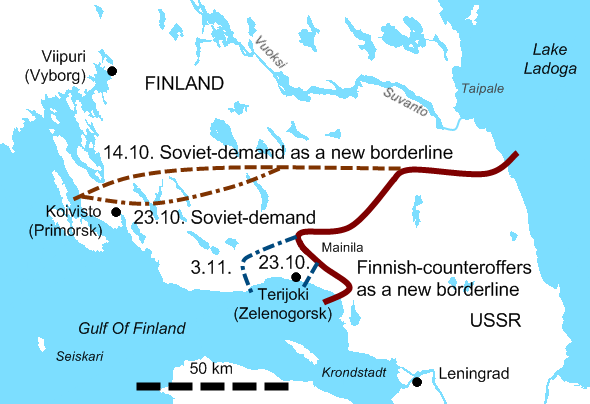
Initial offers and counter-offers over the boundary between the Soviet Union and Finland on the Karelian Isthmus
Later in November 1939, after negotiations completely broke down, there was an accidental shelling of a Soviet border post near Mainila - later found to be conducted by Soviet agents themselves. The Soviet Union took this as a casus beli, and later attempted to invade Finland after talks broke down following the shelling. Both sides had however already started mobilisation, and the invasions quickly hit problems. On the Karelian Isthmus, the Finns quickly retreated from the border to the fortified "Mannerheim Line" of defensive emplacements, which had been worked on over the last 2 decades. The lack of any kind of road in large areas of Central Finland hampered invasion there by Soviet armies,. Finland also immediately put out a call for help to the Swedish Government.
The Soviet invasion had been planned upon little or no Swedish involvement - it was thought in Soviet circles that Sweden would allow volunteers but limit official involvement to political and diplomatic support, something the Stalin cared little for. It proved to be an oversight - prevailing though in the Swedish Cabinet was that (similar to the Finnish Civil War) keeping the Russians away from Sweden was best accomplished through assisting Finland and therefore avoiding any direct Swedish-Soviet action. While Parliamentary opposition prevented the Swedish Army from being deployed on Finnish soil for fear of being involved against the Soviet Union (although advocated by the Swedish Army itself as the best form of defence for Sweden, primarily by Archibald Douglas of the Northern Army Corps), Sweden did allow large numbers of volunteers to cross into Finland again, and sold large amounts of munitions to Finland.
Swedish Volunteers in the Winter War
All over the country, Soviet forces were confounded by the far more mobile and better equipped Finns, who thrived by dividing and conquering the Soviet forces. Swedish munitions, including many anti-tank weapons such as the Bofors 37 mm AT gun were sold en masse - something Finland originally lacked. Much equipment was also captured from eliminated Soviet units. Soviet advances in Ladoga Karelia and Central Finland were both eliminated, leading to Soviet concentration on one front - that on the Karelian Isthmus, as well as their successful forces in Petsamo.
By the start of 1940. with the Soviets concentrating on taking the Karelian Isthmus, and the Finnish having proven themselves in the defence of their country over the winter months, the Swedish Government's opposition to involvement started to wane. By the end of January, the Swedish Parliament passed a resolution to further aid Finland, and military plans were further refined. From the Soviet point of view, it looked like Swedish action and a possible declaration of war was a distinct possibility. Considering the current results of the war, this was something to be avoided; significant Swedish action in tandem with the stubborn Finnish defence could deal a real blow to Soviet interests.
The Soviet forces against the Finnish Mannerheim Line
By early mid 1940, the invasion was largely considered a failure, and was a disaster for the Soviet Union, who had lost roughly 150,000 troops and another 200,000 troops injured or wounded. Soviet newspapers were struggling to explain the poor performance of the Soviet Army, and Finnish-Soviet negotiations began eagerly between the two sides - the Finns due to a decline in the available artillery ammunition they had available on the Mannerheim Line which could make them later vulnerable (something unknown to the Soviets). The Finns wanted an end before their lines crumbled from war weariness, the Swedes wanted an end so they didn't have to get involved to protect both their own and Finnish interests, and the Soviets wanted an end before Sweden got involved and to what had been an exceptionally poor military performance.
While the Winter War had gone exceptionally well for Finland, there was a broad understanding within the Finnish cabinet that the war had been "won" as much by Finnish excellence as by Soviet under-performance - not a combination likely to happen a second time. Several face-saving gestures to the Soviet Union would be needed if another war was to be averted, and peace obtained before a Finnish collapse. The Moscow Peace Treaty in 1940 therefore allowed for the cessation of several areas on the Karelian Isthmus to the Soviet Union, significantly extending the distance from Leningrad to the boundary. Petsamo was also returned to the Soviet Union, who had wanted at least the Kalastajansaarento peninsula - the Finnish had found themselves entirely unable to defend the area anyhow. In return, Finland received Repola and Porajarvi - 2 areas much longed after by the Finnish populace. Several islands in the Gulf of Finland were also ceded to the Soviet Union.
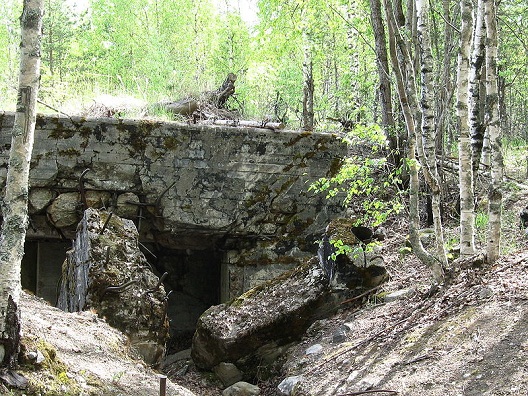
Remains of Finnish fortifications on the Mannerheim Line
The very next year in 1941, the Soviet Union was invaded by Nazi Germany in an act called "Operation Barbarossa", and suddenly the Soviet spotlight was no longer on Finland. The Germans swept through Russia, and by September were besieging Leningrad. Although the Finnish view was that of a sweet irony - the biggest threat to Leningrad had come from the opposite side of the city rather then the Finnish side, the Government took a more cautious approach, allowing food supplies to be transferred (by the Finns themselves) through Finland to Leningrad, with the Soviets having to ship military supplies across Lake Ladoga - something that was risky for the crews involved. If the Finns refused to help, they risked being labelled as co-belligerents with Nazi Germany at best, and a pseudo-Axis power at worst.
In Denmark, the effects of the war had been much less. Remembering the incidents of German trespasses during the First World War, the Danish Army had the Danish-German border well secured to prevent any accidents, although the border would be little obstacle to a German blitzkrieg if they were attacked as the Danish well knew. Friendly politics where possible were conducted, and the Danes assisted in the shipments of Swedish iron ore where necessary. It was only after the Second World War, during the Nurumberg trials (and in part due to them) that details came out of a planned Nazi occupation of Denmark and Norway to tighten and secure shipments of Swedish iron ore to Germany, and avoid Allied interference. The planned invasion, named Operation Weserubung, was reportedly only held back due to the friendship and perceived de facto defensive alliance between Denmark, Norway & Sweden that the operation did not go ahead - the Germans feared a cut off of Swedish iron ore upon invading Denmark. It could take a significant amount of time to capture and secure the entire supply chain from the iron ore mines in northern Sweden, which would then be open to "terrorist" disruption.
All this served to create a large sense in Denmark that national security was best maintained in tandem with Sweden, and on a pan-Scandinavian basis, and this was further reinforced by the fact that the former Danish-German border was now a de facto Danish-Soviet border (in the form of the East Germany) after the Soviet occupation became the Warsaw Pact area. Just after the Second World War, in 1946, the unpopular Christian X of Denmark died and was replaced by his son. Frederick IX of Denmark came to power, reflecting the populace's growing pan-Scandinavian feelings with his wife of 14 years, the Swedish Princess Ingrid.
Departing by ferry to Aarhus
The ferry to Aarhus
Appendix:
The eventually agreed border between Finland and the Soviet Union, as evidenced in the Moscow Peace Treaty. The yellow area is the entire area that was debated over, with the purple line being the eventually mutually agreed new border, which shows Stalin's original "speculative at best" demands to end the war.
--------------------------
Notes: Plenty of text again! Firstly the Navies - as you can see again, the military forces of the FNS are still "state-based", although in a tightly integrated formation. After the downfall of the Soviet Union, there is little spur to push on to completely integrate the forces into one "Nordic" military.
Other events in Finland have cemented the place of the Finnish Monarchy - steel is forged from fire after all. I didn't cover too much of the history, I've got the rudiments of a piece on each of the Scandinavian monarchs to come at some point, especially as most of it pre 1940ish is pretty similar to OTL. Just the seeds are different, for a different post-WWII Scandinavia now.
Winter War has gone better for Finland (not that OTL was much of a failure!). Closer Swedish-Finnish relations have led to the OTL Swedish volunteers in the Winter War to start with, but also significant amounts of armaments - something Finland desperately lacked in the Winter War. I did toy with the Swedish Army getting involved earlier, but couldn't really find a decent way of doing it. Some smallish territory swaps at the end of the Winter War, Finland eventually gains it's long desired Repola and Porajarvi, but at the loss of Petsamo and bits of the Karelian Isthmus. It makes no sense to continually poke the Soviet bear, especially if you can drop terrain in compensation for something else rather then losing it for nothing through war.
In Denmark (& Norway), Operation Weserubung never occured, due to German fears of losing Swedish iron ore imports upon which it was dependant - and not being able to secure it enough by invading it along with Denmark & Norway. Germany doesn't want to push Scandinavia into the Allied sphere. Note the "unpopular Christian X of Denmark" - who is primarily remembered for his poor actions during the Easter Crisis of 1920 in Denmark. Despite the German accidental incursion into Denmark in WWI, I would still see Christian X's actions blighting the political chance to grab more of Schleswig, therefore the as-OTL Danish-German border is in existence. Although Schleswig-Holstein is part of East Germany due to the Soviet Union having more troops to push back against Germany with as there was no Continuation War (though I'd envisage Hamburg as remaining West Germany). This will cut Denmark off from the rest of Western Europe psychologically, and turn it towards pan-Nordicism more.
Plus I knocked this up at some point earlier this week. Figured I'd stick it in somewhere:
And last but not least - massive thanks to DrakonFin for substantial assistance with the Finnish writings here!

